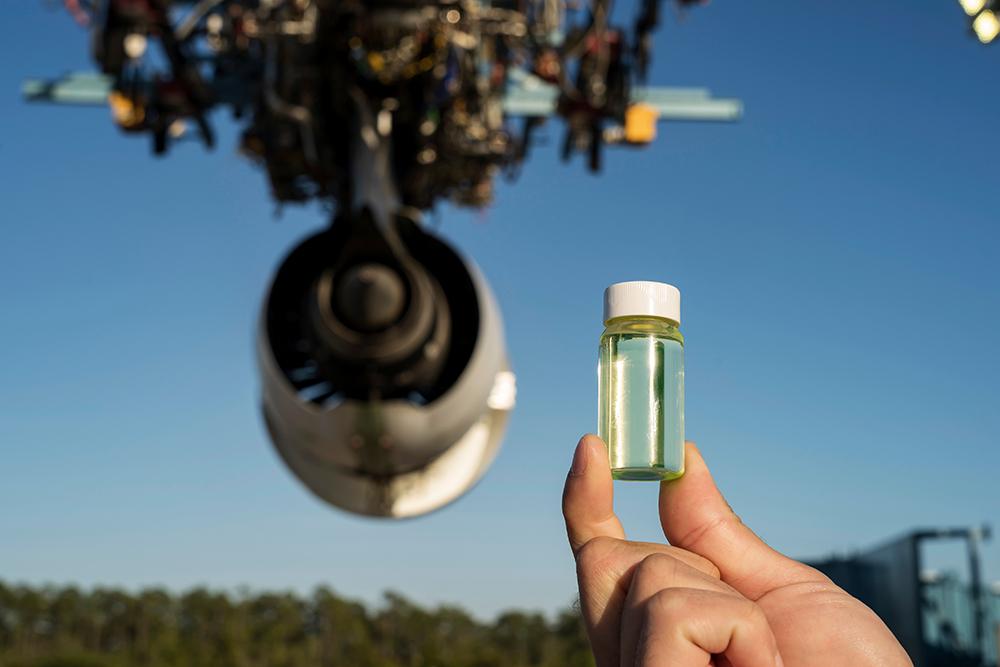Pratt & Whitney Targets Increased SAF Testing to Reduce MRO Environmental Footprint

Pratt & Whitney (P&W) has ramped up its sustainable aviation fuel (SAF) testing efforts through a new partnership with aviation fuel supplier Air bp. The companies have signed a memorandum of understanding to test and research the use of SAF in P&W engines.
The companies will investigate the use of SAF blends of up to 100% for engine and propulsion systems testing through 2024. They also plan to collaborate on researching the performance of 100% SAF in propulsion systems to glean more insights on fuel performance and emissions reductions.
According to Graham Webb, P&W’s chief sustainability officer, the partnership will further its efforts to reduce dependence on fossil fuels while improving engine efficiency. He adds that the collaboration will enable “the evaluation, testing and validation needed to ensure that our engines are fully capable of operating with 100% SAF.”
Last month, P&W successfully tested its GTF Advantage engine with 100% SAF at its West Palm Beach Engine Center, which was recently upgraded to support the GTF engine family. The OEM has been testing SAF at a range of different blends since 2006 on multiple engine classes, including turboprop, business aviation engines and the GTF. P&W says it plans to continue evaluating plans to extend testing across current and new engine platforms.
According to Andrea Moyes, Air bp’s sustainability director, the SAF testing at U.S. engine facilities will be important for P&W’s regional operations. “As we continue to develop new technologies and feedstocks, some of which may be unique to U.S. availability, it will be very useful for both companies to collaborate on testing and understanding fuel performance, and on working on increasing SAF utilization in engines up to 100%,” she says.
In addition to internal testing at its own West Palm Beach MRO facility, P&W is also maintaining “a constant dialogue with its MRO collaborators, including on the subject of SAF specification,” according to Sean Bradshaw, technical fellow for sustainable propulsion at P&W. He adds that although ASTM International standards for SAF have existed for some time now, the increased focus on sustainability is leading to more frequent operator queries about the use of SAF.
“It is too early to conclude whether 100% SAF will have any impact on the engine maintenance. The operational specification for 100% SAF has yet to be defined,” says Bradshaw. “Given that commercial availability of 100% SAF may be decades away, there is no immediate need for MROs to take steps to prepare for this.”
However, Bradshaw says SAF availability at lower blend levels is expected to increase in the coming years, so P&W encourages the industry to adopt the use of ASTM-approved SAF blends to reduce MRO environmental footprint.
Aside from its new partnership with Air bp, P&W has several other initiatives in place focused on non-fossil based alternative fuels. It is collaborating with Embraer on a 100% SAF flight test of the GTF-powered E2 jet, and it is supporting German helicopter operator ADAC Luftrettung on its SAF strategy.
P&W is also working with partners to develop technologies for hybrid-electric and hydrogen propulsion. For instance, it is collaborating with Collins Aerospace to develop a hybrid-electric flight demonstrator based on a De Havilland Dash 8-100 regional aircraft, which is targeting a 30% improvement in fuel efficiency. It is also partnered with ARPA-E (the U.S. government’s Advanced Research Projects Agency-Energy) to develop advanced hydrogen fuel technology that it says will potentially improve fuel efficiency by 35% and reduce nitrogen oxides by 80%.





